Epochra canadensis (syn. Euphranta canadensis)
If you’ve ever plucked a juicy, ripe gooseberry from the plant and taken a bite, only to be horrified to discover a tiny white maggot has taken up residence in the middle of the fruit, it’s an experience you won’t soon forget.
Gooseberry or currant maggots are tiny pests that burrow into currants and gooseberries, and devour the pulp and seeds inside.
That hungry maggot is the larval form of the currant fruit fly, aka the yellow currant fly.
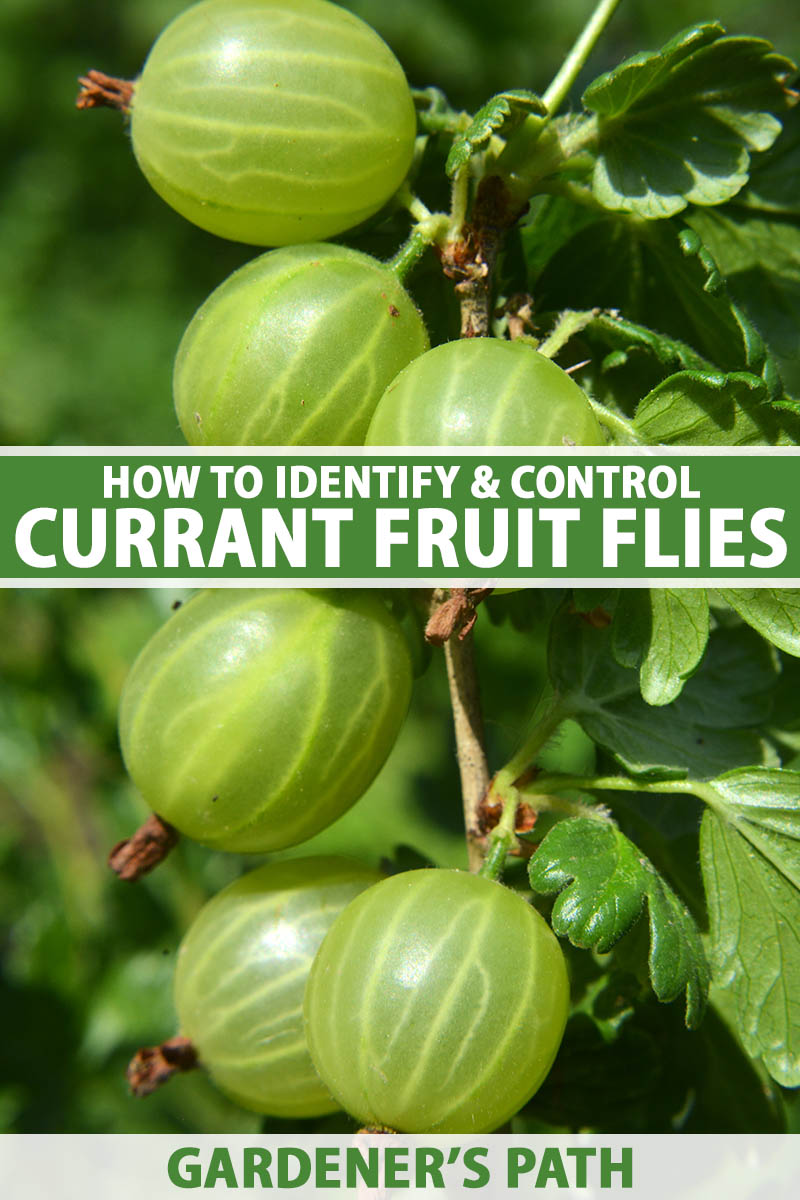
We link to vendors to help you find relevant products. If you buy from one of our links, we may earn a commission.
Beyond being a seriously traumatizing dining experience if you go to take a bite from a fruit that’s been infested, they can also cause the fruit to drop from the bush, so you lose out on that tasty harvest you’ve been working so hard to cultivate. And no one wants that!
Fortunately, this guide will help you identify and control these little pests. Here’s what we’ll discuss up ahead:
What You’ll Learn
The good news is that these pests are totally manageable, but the bad news is that it takes some effort.
I have a friend who stopped growing gooseberries commercially in Oregon because she got sick of all the damage this pest was doing to her harvest. But for the average home grower, it’s just going to require some dedication.
On that note, let’s get going!
What Are Currant Fruit Flies?
Currant fruit flies are small insects that lay eggs that develop into larvae, and feed on the fruits of gooseberry and currant bushes.
Don’t confuse currant fruit flies with the imported currant worm (Nematus ribesii). That’s a whole other problem.

These green larvae with black spots are caterpillars that nibble on the foliage of currants and gooseberries, with the latter being their favorite, and adult currant worms are sawflies that look similar to houseflies.
There is also a gooseberry fruitworm, (Zophodia convolutella), which is a green caterpillar with dark green stripes down its sides.
This worm eats its way out from the inside of the berries, destroying your fruit crop, before moving on to eating the leaves.The adults are gray moths with mottled brown, cream, and gray wings.
Currant fruit fly (Euphranta canadensis) adults, on the other hand, are about a third of an inch long (eight millimeters) or slightly larger and are beige, yellow, or orange in color. They have clear wings with dark bands across them.
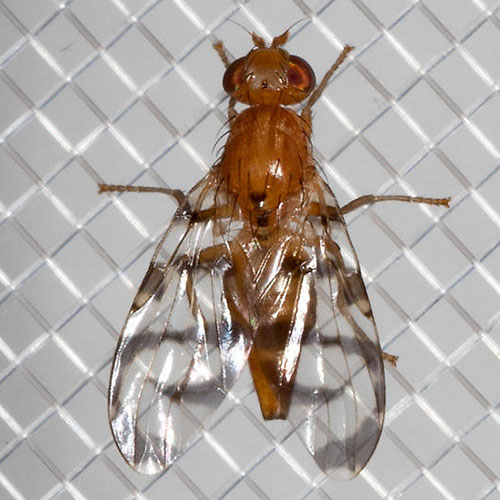
The maggots are about a quarter of an inch long (five millimeters), white, with tapered heads. If you discover them in the fruit, this will look kind of like someone inserted a grain of rice into the middle of your berry.
If you head out to visit your berry patch and you notice yellow flies hanging out on fence rows, bushes, or nearby trees, you might want to start inspecting the berries for signs that eggs have been laid (more on that below).
Another way to identify the flies is to put out yellow sticky traps. This won’t eliminate an infestation, but it will alert you to the fact that you have a problem on your hands and will reduce fly numbers.
I use yellow sticky traps all the time during my gardening endeavors. They’re an essential part of my arsenal and I highly suggest you keep some around, too.
You can find packs of five, 10, 25, 50, and 100 available at Arbico Organics.
Currant Fruit Fly Biology and Life Cycle
The females lay eggs in the spring under the skin of the young, green, developing currant or gooseberry fruits. Each female can lay up to 200 eggs, usually one egg per berry. That means one fly can ruin a whole lot of berries in a hurry.
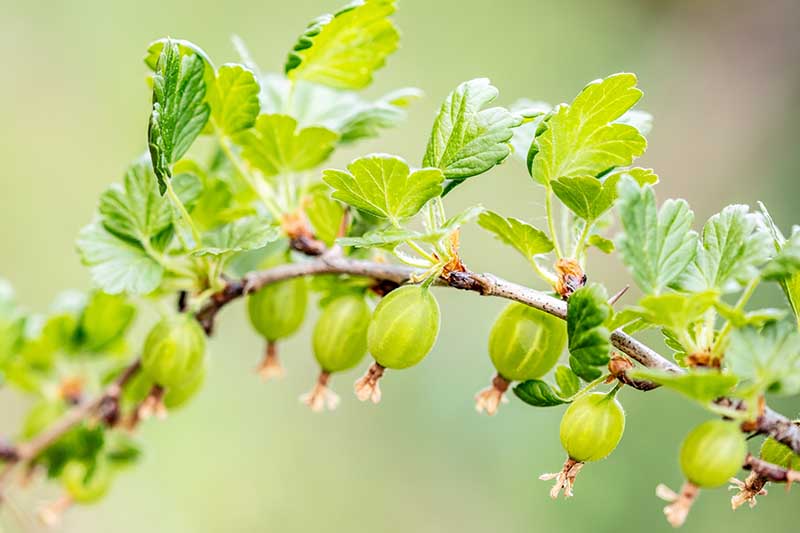
After a few days, the maggots hatch and burrow further into the berry, feeding on the pulp and seeds as they go. They hang out in the center of the berry, eating until they are fully grown. One maggot can usually eat the entire interior of the fruit – they’re greedy little pests.
As the fruits mature, the infested ones may turn red and they may fall from the plant onto the ground. Eagle-eyed gardeners may spot a flat, discolored area where the adult inserted the egg into the fruit.
Around the time when infested berries start falling to the ground, the maggots drop to the soil (if they aren’t there already) where they hang out during the winter as brown pupae about the size of a grain of wheat.
They burrow one to three inches deep near the base of the bushes to overwinter. They especially love spots that are covered in leaves and other debris, and they can remain in the soil for up to 10 months.
In the spring, they emerge from the soil as adult flies over a period of several weeks. But hey, on the bright side, there’s only one generation per year!
Organic Control Methods for Currant Fruit Flies
I always encourage gardeners to try organic control methods first, but particularly with this pest. With some effort, you can prevent these fruit flies from laying eggs without using any chemicals.
Cultural
The first step is to make your growing area inhospitable to the flies and larvae.
Rake up any fallen berries right away to prevent the maggots from burrowing into the soil. Remove any leaves or other debris from under plants in the fall to create a less cozy spot for the pupae to hide in. We want to make it nice and easy for predators like birds to find them.
In the fall, winter, and spring, gently cultivate the soil around the bushes down a few inches to expose the pupae and larvae. Cold weather can kill them, but birds and other critters will do most of the work. Currant maggots make a tasty snack.
Just keep in mind that gooseberry and currant plants have shallow roots. You don’t want to cultivate too deep or you could damage their root systems.
Physical
If you have currant flies, floating row covers are about to become your new best friend. Just note that you absolutely don’t want to use covers if you already have an infestation!
You’ll just be trapping the flies in with your berries, and they’ll be able to lay eggs without interference from any predators.
Wait to put the covers in place until the petals have fallen from the blossoms on the plant. Otherwise, pollination might not occur and you won’t get fruits. Right after the petals fall, get those covers in place!
Be sure to secure the covers to the stem of the plant. If you attach the covers to the ground, the flies can emerge from the soil inside the cover.
You can also lay a tarp or a layer of plastic down on the ground to prevent the maggots from dropping to the soil in order to pupate. Typically, the pupation stage happens in late spring or early summer. In the Pacific Northwest where I live, that translates to mid- to early June.
Make sure the tarps extend a foot or two beyond the fruit drop zone under the bush. Every few days, pick up the tarps, carefully shake the maggots and berries into a garbage bag, seal it, and dispose of them.
You can remove the tarps completely when there are no more berries on the plants.
You should also head out to your plants daily and pick any visibly infested fruits, and dispose of them in a sealed bag.
Predators
Do whatever you can to encourage swallows, swifts, cedar waxwings, and warblers to visit your garden. They love to snap up flies and can help reduce currant fruit fly numbers.
Have chickens, ducks, peafowl, or guinea fowl? Awesome, let them loose in your berry patch.

They’ll eat the maggots, pupae, and flies. You might lose a few berries lower down on the bushes, but birds won’t usually start going at them until the fruit is ripe. By then, you can herd your flock somewhere else.
After the berries are all harvested, cultivate the soil and let the birds back in to dig up and devour any errant pupae.
Organic Pesticides
There aren’t any spray treatments available that are effective against the larvae because they burrow into the fruit where they can’t be reached. Any treatment needs to be aimed at controlling the adult flies, and you need to time the application so that you are killing the flies before they start laying.
After emerging from the soil, the flies start laying eggs within about two weeks. This is where sticky traps come in handy. Starting in the early spring, hang the traps on the stems of the bush at the same height where the berries are growing.
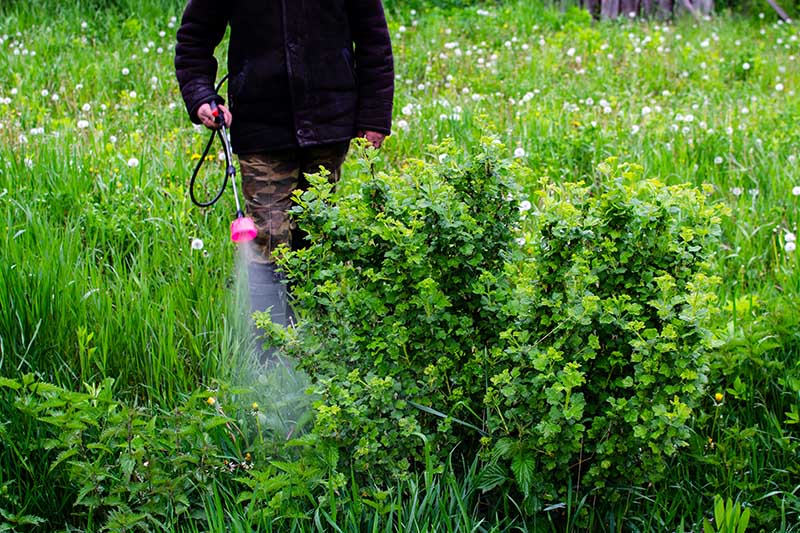
At the first sign of a fly, it’s time to get spraying. You can’t stop after one application, either.
Since the flies emerge over a period of a few weeks, you must spray repeatedly, at least once a week until the berries are ready to harvest, to kill the newly-emerged adults. Reapply after rain, as well.
Don’t forget to apply spray to the surrounding trees and bushes, and apply it to both the top and the bottom of the foliage. That’s where the flies like to hang out.
Pyrethrins, which are derived from chrysanthemum flowers, are effective against the flies.
Monterey Bug Buster-0 contains this pesticide and is approved for use in organic gardens, but that doesn’t mean it doesn’t have potential unwanted side effects. It is toxic to bees and fish.
Remember, spray on plants when the adult flies are present. To pick up some of this handy knock-down spray, head over to Arbico Organics for an eight-ounce or 16-ounce container.
As an alternative, Spinosad, which is created using a certain soil bacterium, kills off currant fruit flies. Follow the manufacturer’s directions for application.
Monterey makes a garden insect spray that contains Spinosad, which you can purchase in pint, quart, or gallon containers at Arbico Organics. It is also toxic to bees, so use caution.
Don’t apply any of these products when bees are foraging. To limit your chances of accidentally harming bees, apply in the evening.
Peppermint and rosemary essential oils repel the adult flies. Mix a teaspoon of oil with a cup of water and spray plants liberally after the blossoms have faded. You can also purchase pre-made mixes. Apply every few days and any time after it rains.
I wouldn’t rely on essential oils alone, but combined with cultural controls, you can keep all but the worst infestations under control.
Chemical Pesticide Control
You should always try to do whatever you can to control this pest without using chemicals, since chemical sprays often have unintended consequences.
In this case, Paragon Conquer, which contains esfenvalerate, is an effective control against currant fruit flies. But it also kills local bee populations. To minimize the impact, apply in the evening and when there is no wind.
Use this spray when flies are present, following the manufacturer’s application recommendations and according to the schedule laid out above for organic pesticides.

If you need to purchase some to tackle your currant fly situation, Amazon has bottles concentrate available.
Please be sure to wear protective clothing like long sleeves and eye goggles when working with chemical pesticides.
Shoo, Currant Fruit Flies!
No one loves to deal with pests, especially ones that lurk inside juicy berries, just waiting to surprise you like something out of a gothic novel. But currant fruit flies are totally manageable, and now you know how.
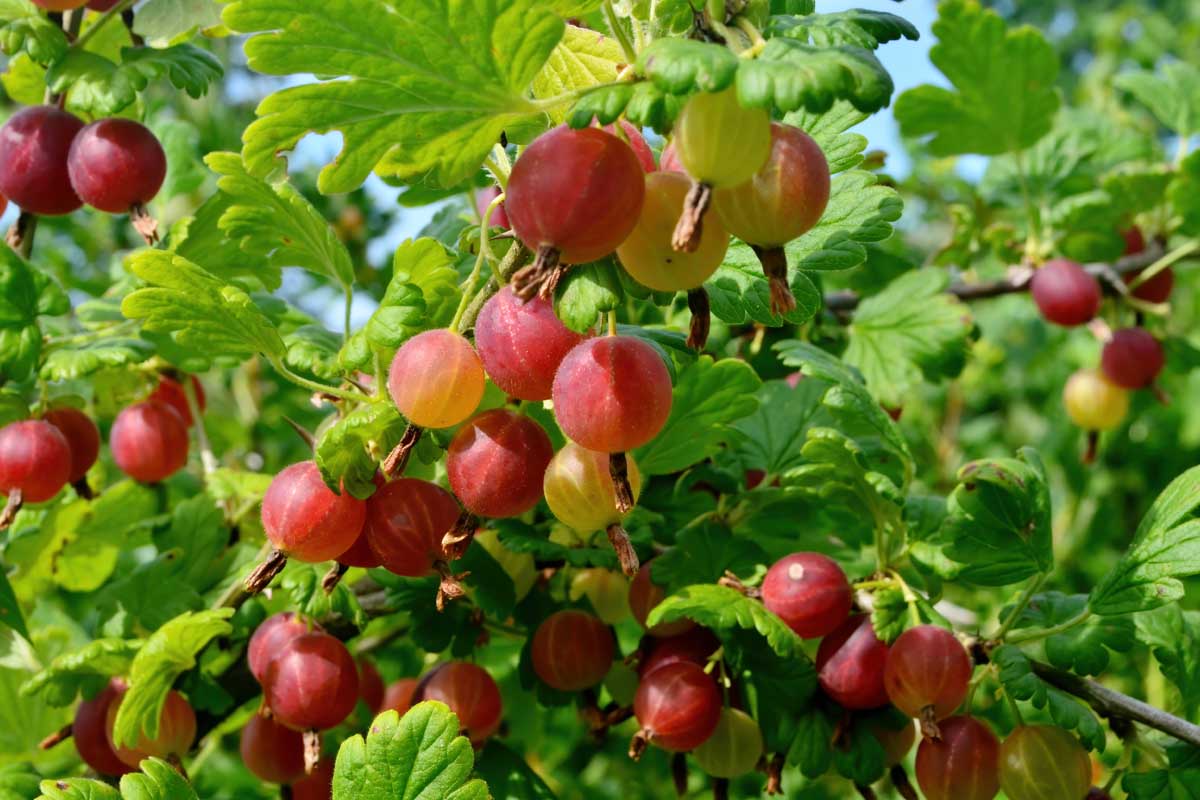
If you were able to eradicate an infestation, please be sure to come back and tell us what worked best for you.
Did this guide help you identify or get rid of this gooseberry pest? If so, we have some other great information on battling bugs in the garden for you to read next:

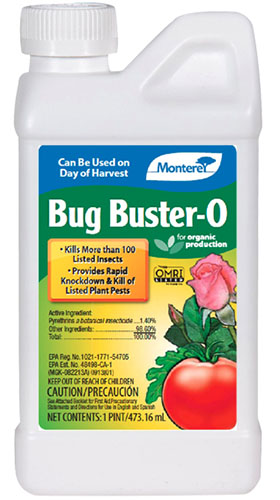
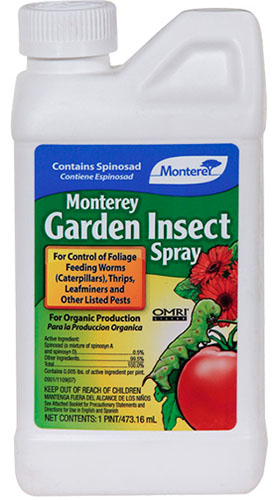
We tried so hard to break the cycle for these for our currants and gooseberries! 2 years in a row I picked ALL the fruit off of the bushes and got rid of it, then we actually dug up and moved the bushes… all to no avail. We have such a problem every single berry gets a worm in it. We don’t have poultry yet to help with the job, and since our bushes are in our food forest where we’re encouraging mulch, and we’re unwilling to spray, I guess we’ll have to try traps, poultry and some kind of… Read more »
They’re definitely a frustrating problem, and if your neighbors or any wild berry bushes nearby have currant flies, the job is even harder. I would definitely recommend a combination of chickens and floating row covers. Put the covers in place well before the berries start to form, and tie the covers around the base of the plant so the flies can come up through the ground under the covers.